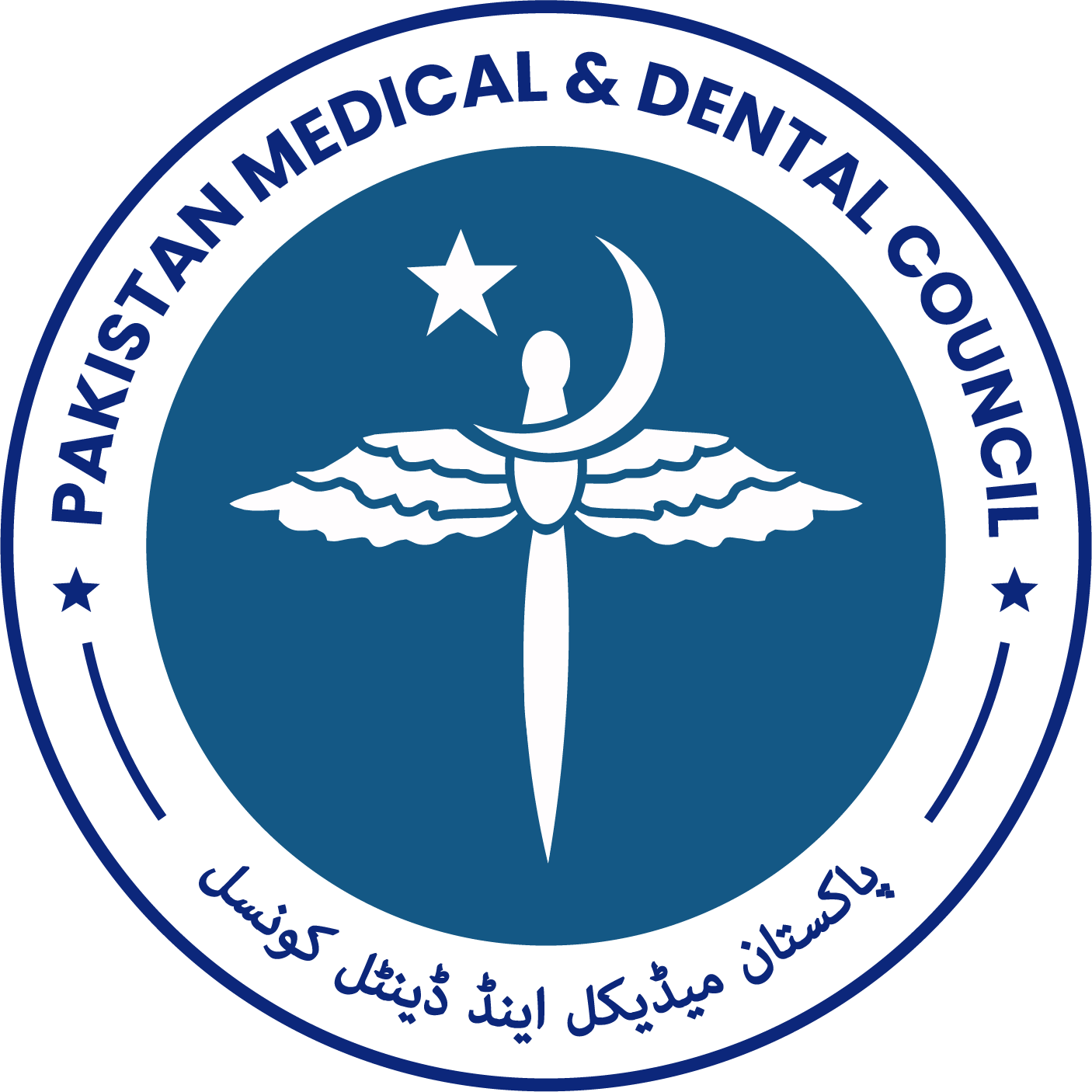Development of Surgical Functional Service Quality scales for Tertiary Care Hospitals: Consumer’s Perspective
DOI:
https://doi.org/10.53685/jshmdc.v4i2.177Keywords:
Surgical Functional Service Quality, Tertiary Care Hospitals, Patients’ PerspectiveAbstract
Background: Surgical department is the economically viable and resource generation department of a hospital. Its services not only focus to build a long-term image of the hospital but also to generate a positive word of mouth in the community because the consumers have longer hospitalization
Objective: This study is aimed to design a scale for measuring functional service quality of surgical department based on service user’s perspective.
Methods: This was a mix method research with a cross-sectional study design. Survey questionnaire was used to get primary data from the respondents (patients admitted to wards). Out of 835 self-administered questionnaires, 499 valid responses were received for further data analysis. Simple descriptive, Exploratory Factor Analysis, Confirmatory Factor Analysis were employed using SPSS version 21 and AMOS version 21.
Results: The scale identified five constructs that can be used as contributing factors to measure and evaluate surgical department functional service quality. These dimensions include skill, empathy, food, responsiveness and promptness. The model fit values include CFI (0.98), RMSEA (0.055), and GFI (0.96) which show goodness of fit.
Conclusion: Though the method of assessment and development of scale is not novel but according to our knowledge based on published literature this study is novel to identify the scale based on service quality dimension in surgical facilities in the developing countries.
References
Broder MS, Payne‐Simon L, Brook RH. Measures of surgical quality: what will patients know by 2005? J. Eval. Clin. Pract. 2005; 11(3):209-17. DOI: https://doi.org/10.1111/j.1365-2753.2005.00518.x
Grimes CE, Bowman KG, Dodgion CM, Lavy CB. Systematic review of barriers to surgical care in low-income and middle-income countries. World J Surg. 2011; 35: 941-450. DOI: https://doi.org/10.1007/s00268-011-1010-1
Birkmeyer JD, Dimick JB. Potential benefits of the new Leapfrog standards: effect of process and outcomes measures. Surgery. 2004; 135(6):569-575. DOI: https://doi.org/10.1016/j.surg.2004.03.004
Jamison DT, Breman JG, Measham AR, Alleyne G, Claeson M, Evans DB, et al. Cost-effective strategies for the excess burden of disease in developing countries. In priorities in health 2006. The International Bank for Reconstruction and Development/The World Bank. DOI: https://doi.org/10.1596/978-0-8213-6260-0/Chpt-4
De Man J, Roy WM, Sarkar N, Waweru E, Leys M, Van Olmen J, et al. Patient-centered care and people-centered health systems in sub-Saharan Africa: Why so little of something so badly needed? J Pers Cent Med. 2016; 6 (3):162. DOI: https://doi.org/10.5750/ijpcm.v6i3.591
Chen LH, Chen CH, Loverio JP, Wang MJ, Lee LH, Hou YP. Examining soft and hard attributes of health care service quality and their impacts on patient satisfaction and loyalty. Qual Manag Health Care. 2023; 10-97. doi:10.1097/QMH.00 00000000000420 DOI: https://doi.org/10.1097/QMH.0000000000000420
Iram Fatima, Ayesha Humayun, Usman Iqbal, Muhammad Shafiq, Dimensions of service quality in healthcare: a systematic review of literature, Int J Qual Health Care. 2019; 31(1): 11–29.doi:10.1093/intqhc/mzy125
Ali J, Jusoh A, Idris N, Nor KM. Healthcare service quality and patient satisfaction: a conceptual framework. Int. J. Qual. Reliab. Manag. 2023. DOI: https://doi.org/10.1108/IJQRM-04-2022-0136
Fiala TG. What do patients want? Technical quality versus functional quality: a literature review for plastic surgeons. Aesthet. Surg. J. 2012; 32(6): 751-759. DOI: https://doi.org/10.1177/1090820X12452555
Parasuraman A, Zeithaml VA, Berry LL. A conceptual model of service quality and its implications for future research. J. Mark. 1985; 49(4):41-50. DOI: https://doi.org/10.1177/002224298504900403
Parasuraman AP, Zeithaml V, Berry L. SERVQUAL: A multiple- Item Scale for measuring consumer perceptions of service quality. J. Retail. 1988; 64:12-40.
Chun J, Bafford AC. History and background of quality measurement. Clin Colon Rectal Surg. 2014; 27(01):005-9. DOI: https://doi.org/10.1055/s-0034-1366912
Wardojo SS, Rosadi R. Analysis of Patient Satisfaction Levels According to the SERVQUAL Method on Post-Stroke Services at the Physiotherapy Clinic Muhammadiyah University Hospital Malang. KnE Medicine. 2023:1-8.
Ivankovic D, Poldrugovac M, Garel P, Klazinga NS, Kringos DS. Why, what and how do European healthcare managers use performance data? Results of a survey and workshop among members of the European Hospital and Healthcare Federation. PLoS One. 2020; 15(4): e0231345. DOI: https://doi.org/10.1371/journal.pone.0231345
Shafiq M, Naeem MA, Munawar Z, Fatima I. Service quality assessment of hospitals in asian context: An empirical evidence from Pakistan. Inquiry. 2017; 54: 46958017714664. doi: 10.1177/0046958017714664.. DOI: https://doi.org/10.1177/0046958017714664
Hu LT, Bentler PM. Cutoff criteria for fit indexes in covariance structure analysis: Conventional criteria versus new alternatives. Structural equation modeling. 1999; 6(1):1-55. DOI: https://doi.org/10.1080/10705519909540118
Bagozzi RP, Yi Y. On the evaluation of structural equation models. J. Acad. Mark. Sci. 1988; 16: 74-94. DOI: https://doi.org/10.1007/BF02723327
Gomes JA, Martins MM, Tronchin D, Fernandes CS. Operating room quality in Portuguese hospitals. Perioper. Care Oper. 2020; 18 : 100086. DOI: https://doi.org/10.1016/j.pcorm.2020.100086
Brasel KJ, Lim HJ, Nirula R, Weigelt JA. Length of stay: an appropriate quality measure? Arch. Surg. 2007; 142(5): 461-466. DOI: https://doi.org/10.1001/archsurg.142.5.461
Zarei A, Arab M, Froushani AR, Rashidian A, Ghazi Tabatabaei SM. Service quality of private hospitals: The Iranian Patients' perspective. BMC Health Serv. Res. 2012; 12:1-7. DOI: https://doi.org/10.1186/1472-6963-12-31
Nasiri E, Lotfi M, Mahdavinoor SM, Rafiei MH. The impact of a structured handover checklist for intraoperative staff shift changes on effective communication, OR team satisfaction, and patient safety: a pilot study. Patient Saf. Surg. 2021; 15(1):1-9. DOI: https://doi.org/10.1186/s13037-021-00299-1
Fatima I, Humayun A, Iqbal U, Shafiq M. Dimensions of service quality in healthcare: a systematic review of literature. Int J Qual Health Care. 2019; 31(1):11-29. DOI: https://doi.org/10.1093/intqhc/mzy125
Moudatsou M, Stavropoulou A, Philalithis A, Koukouli S. The Role of Empathy in Health and Social Care Professionals. Healthcare (Basel). 2020; 8(1):26. doi: 10.3390/healthcare8010026. DOI: https://doi.org/10.3390/healthcare8010026
White CN, Buchanan TW. Empathy for the Stressed. Adapt. Hum. Behav. 2016; 2(4):311-24.doi.org/10.1007/s40750-016-0049-5. DOI: https://doi.org/10.1007/s40750-016-0049-5
Danehchin N, Javadifar N, Iravani M, Dastoorpoor M. Service Quality Gap of Care During Childbirth and Postpartum and Its Relationship with Childbirth Satisfaction. J. Health Sci. Surveill. Syst. 2023; 11(1):63-69.
Food and Agriculture Organization of the United Nations (2021): Technical platform on the measurement of food loss and food waste. http://www.fao.org/food-loss-and-food-waste/en/.
Marinho R, Pessoa A, Lopes M, Rosinhas J, Pinho J, Silveira J, et al. High prevalence of malnutrition in Internal Medicine wards - a multicentre ANUMEDI study. Eur J Intern Med. 2020; 76:82-88. doi: 10.1016/j.ejim.2020.02.031 DOI: https://doi.org/10.1016/j.ejim.2020.02.031
Downloads
Published
How to Cite
Issue
Section
License
Copyright (c) 2023 Iram Fatima, Muhammad Shafiq, Ayesha Humayun, Asad Aizaz

This work is licensed under a Creative Commons Attribution-NonCommercial 4.0 International License.
You are free to:
- Share — copy and redistribute the material in any medium or format
- Adapt — remix, transform, and build upon the material
- The licensor cannot revoke these freedoms as long as you follow the license terms.
Under the following terms:
-
Attribution — You must give appropriate credit, provide a link to the license, and indicate if changes were made. You may do so in any reasonable manner, but not in any way that suggests the licensor endorses you or your use.
-
Non Commercial — You may not use the material for commercial purposes.
-
No additional restrictions — You may not apply legal terms or technological measures that legally restrict others from doing anything the license permits.




















